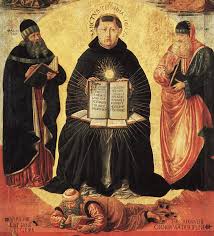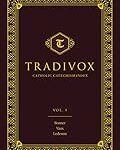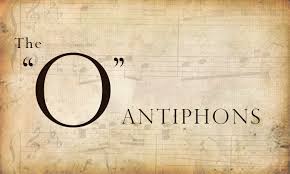Catholic Insight will publish articles on all sorts of topics, related in some way to Catholicism, from the very academic (as in the contribution below) to the more popular. This allows us to be truly ‘catholic’ or universal in our tastes, and, hopefully, appeal to a broad scope of readers. (Editor)
Saint Thomas writes at the beginning of his Summa Theologica:
Our natural knowledge begins with our senses. Hence our natural knowledge can go as far as it can be led by sensible things. But our mind cannot be led by senses so far as to see the essence of God; because the sensible effects of God do not equal the power of God as their cause. Hence from the knowledge of sensible things the whole power of God cannot be known; nor therefore can His essence be seen. But because they are His effects and depend on their cause, we can be led from them so far as to know of God “whether He exists,” and to know of Him that must necessarily belong to Him, as the first cause of all things, exceeding all things caused by Him.
Hence we know that His relationship with creatures so far as to be the cause of them all; also that creatures differ from Him, inasmuch as He is not in any way part of what is caused by Him; and that creatures are not removed from Him by reason of any defect on His part, but because He super-exceeds them all.[1]
Therefore, we can reasonably say that spirit and energy are in God, but exist indistinctly in his oneness. The application of limiting forms gives those two aspects a distinct existence in relation to one another as creatures and a distinct but transcendental existence on the part of God. The application of forms is how God creates.[2]
A Theory of Creation
There is, it seems, between metaphysics and experimental sciences, a gap that the philosophy of nature cannot fill. It is true to say that Thomas Aquinas and Aristotle, the great masters of hylomorphism, the basis of my discourse, glimpsed the reality as both physical and metaphysical, while taking care to distinguish between the two perspectives. In fact, physics examines the corporal elements and their different forms according to their natures in genesis, while metaphysics is focused on their fixed natures or their essences, from the standpoint of Being and of its participating beings. However, these two sciences have developed in the margins of each other and we have not succeeded in bringing the two to a common understanding of the origin of beings.
We must first admit that the sensible universe is the common principle of knowledge for these two sciences: the empirical (physical), which attains its knowledge through hypothesis and experimentation, and the metaphysical (meta ta phusika “after physics”), which comes to its own knowledge through abstraction and analogy. This means that not only the physical knowledge, but also the metaphysical knowledge must be based on concrete objects in order for the mind to succeed in perceiving the shadow of “Being in itself” where lies the meaning of creation. In spite of the transcendence imposed by the non-commensurability between the finite and the infinite, the two sciences can collaborate in unveiling the creative process while remaining distinct from one another. Because it lacks the logical sequence required to link the Creator to the reality of energideas[3], analogy is not sufficient, by itself, to establish in the intellect a bridge between Being and beings. On the other hand, because the infinite Being is immanent in its participating finite beings, analogy can create an opening towards the relationship we want to discover. Thus, a light seems ready to illuminate and make visible the mysterious road that leads to the place where things have acquired their reality. Thus, since physics and metaphysics have a common role as objects of knowledge we can use their complementarity to search for an integral conception of the universe according to its being and its becoming?
Can we say that God does not create by drawing things from himself, but rather that he draws them from “non-being”? Would it be more exact to say that he creates from nothing that is pre-existant outside of himself? Being is the infinite ALL and nothing that is possible (or feasible) exist outside of it, not even the idea of nothing because all beings, including ideas, are participants of Being and cannot be “from nothing”. Thomas Aquinas says it well: “Matter and form virtually pre-exist in God as their primary cause. “[4]
As for nothing-in-itself, that cannot exist, nor can it be known by itself – it is known only by its opposite: the existing thing. And while this “nothing” could be conceived as existing as “non-being”, being created on the basis of it could not exist without a mixture of being and “non-being” This is absurd, unless we understand it in the manner of Maritain. That there is “Being-with-nothingness”, in the words of the latter, does not mean it came from nothing and that it is a mixture, but rather, that it was created with privation of being. There had to be some being (material being) in potentiality, that is in deprivation of forms .
Bergson would have likewise understood the impossibility of creating from nothing since he wrote in Creative Evolution, that “the idea of Nothing, if one claims to see in it an abolition of all things, is an idea destructive of itself and is reduced to a single word.”[5] Such an “idea of abolition of all things may reflect the same character as that of a square circle.”[6] Moreover, in the idea of an object conceived as “not existing” “there is more in that idea than in the idea of this same object conceived as ‘existing’ because the idea of the object ‘that does not exist’ is necessarily the idea of the object ‘existing’ with, in addition, the representation of an exclusion of this object by the actual reality taken as a whole.”[7]
When energy is realized in its first form, this realization is prime matter. Compared to the achievement of subsequent forms, prime matter is pure potentiality. Now, to be realized, this potentiality, mother of all the others, needs an agent that is pure act, that is to say, that exists by itself. Matter, like any other creature, always depends of a creative agent. So, the Creative Agent of prime matter must be First and without a creative agent of its own.
Thomas Aquinas admits that prime matter “as the subject of generation and corruption, is incorruptible” although it is “not infinite, absolutely speaking,” as he explained in the following paragraph:
Prime matter does not exist by itself, in separate state, in the nature of things; it is only potential being, and to subsist it has be actualized. So should we say that it is concreated rather than created. Moreover, even as potentiality, prime matter is not infinite, absolutely speaking, but in a certain order; because its potentiality extends only to forms of existence provided by nature.[8].
So we postulate, with Thomas Aquinas, that as a universal potentiality underlying all changes, prime matter is incorruptible, but finite. Is not contradicting Thomas Aquinas to say that abstracted and liberated from its first form the energy that composed it with its quantitative form returns to infinity. When all secondary material forms disappear, matter is reduced to its universal condition – that of quantized energy – and it will be the only one of its kind, the universal genus, but this would not bring about its annihilation. Such an eventuality would rather be a simple return to the universal potentiality. In fact, if this first form of matter were to disappear, the liberated energy would pass into the indistinctness of a divine attribute.
Here is manifest the problem of the non-existence of matter without form. What does not exist cannot contribute to being. However, we must admit that what is required for the existence of reality must previously have a virtual existence. When Thomas Aquinas recognizes that all creatures “can only act on a pre-required subject[9]“, he admits that any change of form requires energy that is previously formed as a subject. It is true that God does not need a subject outside himself to do his creative action because, as the participated Being of all energideas, he virtually[10] has in himself all the subjects. All other existing thing need to have Being as a principle. The energy formed into matter is the participated subject of Being according to a particular aspect that can be referred to as active potentiality (or force, or any other name we can give to the attribute it represents). Since the term prime matter already implies a composition that includes a form and something else, it cannot be an intrinsic cause of material substances. If the term intrinsic cause were appropriate, this would mean that a thing exists by virtue of its compound and some of its compound; such as saying that water exists by virtue of its compound (oxygen and hydrogen) and a part of its compound (either oxygen or hydrogen). The something which participates in the formation of a material thing is passive potentiality because of its appetite for the form, but by its union to the latter it acquires a potentiality capable of acting, or to be an agent.
So, how do things become real in creation? What is the process? And how can the finite being be drawn from the infinite and transcendent Being? Let it be said first of all, that by creating, God posits laws (or determinations) by means of ideas (or essences )[11] which are principles of those laws that govern the material energy. To understand Creation man must learn to abstract those concepts and understand them as eternal.
Modern science tells us that all matter can be reduced to pure energy. This pure material energy is devoid of any external form (configuration), not even that of the atom and its components. Still, it qualifies as matter because of its first form which is quantity; thus, a measure of contained energy. It is, somehow, prime matter or, at least, matter in its first formal act. Deprived of this first act, energy would no longer be material, but spiritual – therefore divine potentiality. This is why the ancients had reason to believe that there is no matter without form, because without form it is no longer as matter that energy exists, but as pure potentiality. We can also consider it as infinite potentiality; timeless, boundless, immutable; attributable to the unity of the Being who is the divine essence itself. Not being ordered to any determination or form, we can only consider it analogically. Immersed in the pure act of Being it transcends material potentiality.
Material energy is passive or potential when in appetite of a new form since the principle of change that is in it comes from the said form. In such a case, there is an intrinsic effect since it is the transformation of the subject itself. Material energy is active potentiality when it produces an effect by virtue of the form by which it is in act. In such a case, there is an extrinsic effect since it is a change to the object. The form in question is the raison d’être of a natural thing and must be seen as its perfection. Potentiality and perfection have their origin in a unique spiritual principle, the Creator. That is how I read the following passage from the Summa Theologica:
These active and passive potentialities of natural things, if it is true that one can call them reasons in as much as they are in corporeal matter, nevertheless they also can be called reasons in relation to their origin, in as much as they proceed from ideal reasons.[12]
Indistinctly, in the divine unity, there is what in the human spirit distinctly represent to itself as energy and ideas (or forms, species). When we consider these things as united in reality we can say that they are energideas. God creates prime matter when He posits defining limits (forms or species) in the divine energy. Since He is infinite, God cannot communicate himself completely – which would create another God – so He must communicate his being partially. So, as was said, the form, that is to say, the idea or essence having its origin in God, informs the divine attributes to draw from them a limited genus, called separate substance, and a quantified genus called prime matter. A separate substance, such as the angel, does not possess an energy that is quantified, but one that is indirectly limited by the intellect, itself limited by its specific form or, generally, its generic form. This is what Sertillanges indicates inversely:
In the order of creation, the idea of limit is included in the characteristic of the good; because it serves to define all beings. What is to define, if not to limit? The limit is what establishes a being in its own essence. If the triangle was not limited to three sides, it would not be a triangle, and the triangle would not exist. And if any creature was not limited to a particular species, this creature having itself the fullness of being, would be God.[13]
By informing his divine energy – immeasurable potentiality; active and volitional, which can only be perceived by the human mind analogically – God creates a limitation which “establishes a being in its essence”, that is to say, in its form. Then the Infinite Being transcends the being that it creates, as the posited limitation produces a quantitative energy that can be material or immaterial. Prime matter receives other limiting forms, specific or accidental, which when added differentiates and individualizes. This operation has changed nothing of divine energy as it is infinite and cannot be increased or decreased – nothing changes in God, every change is on the side of the creature. And since in the process of creation the Infinite remains in all its fullness, He will be “all other” in relation to the his finite Creation. It is in a reverse manner, again, that Sertillanges affirms the same thing in the book cited above:
What does the attribute of infinity brings with itself ? Simply the deprivation of limit. A subject can be said infinite in as many ways as it can be said to be limited. Being, universally conceived, can be limited by a specific nature (it is this thing and not something else). It will be called infinite with the suppression of such a limit. It is the infinity of essence. It is God.[14]
Man cannot therefore completely dis-inform matter. If he could do so down to its final form, that which belongs to prime matter, he would be depriving the latter of its quantity, that is to say it would not be accessible to his rational knowledge anymore. (Or, again, it would be annihilated since we cannot understand this concept except in its negative aspect, i.e., to understand the indefinite in its absence of reality, which is equivalent to the absence configuration, size, limitation …)
We see, then, that what human intelligence can say immediately of God is only what He is not. By deleting the specific and particular forms of material energy, we obtain the idea of a separate energy that we cannot think otherwise than by a negation that includes this deletion. Indeed, the idea is the form and since we cannot think without ideas, we can neither positively conceive of a formless energy.
In this article, I wanted to demonstrate that despite the incomprehensibility of the divine for any created intellect, it is possible to accord intelligibly the effects of its causality, whether they are perceived as beings of reason or as phenomena. Although God’s transcendence does not allow us to grasp His essence directly, the philosopher of nature can perceive his the shadow through analogy since that is immanent in matter, the object of empirical science. It was not a question of entering into the domain of experimental sciences, but only to open the door that communicates between infinite and finite energy and to bring together two areas of knowledge.
In order to succeed in answering all the questions proper to its field of knowledge, experimental science must acknowledge the existence of the spiritual world, simply because matter issues from the Spirit. No matter how powerful his telescope may be, the man of science will never be able to see what lies beyond the Big Bang and probably neither the Big Bang itself.
Deacon Jean-Nil Chabot is a permanent deacon in the Madawaska Valley, married to Ann Chabot for many years, who have raised their five children primarily in the north, in Moose Factory. Jean-Nil holds his Ph.D in the philosophy of Saint Thomas Aquinas from Laval University in Quebec City.
[1]. Thomas d’Aquin, Somme théologique: I, q. 12, a.5
[2]. According to Aquinas it is “virtually” that “matter and form pre-exist in God.” He wrote that “we must consider not only the emanation of a being especially of a particular agent, but also the emanation of all beings from the universal cause, which is God; and this emanation we designate by the name of creation “(1, q 40 a.1.); and furthermore, that “probably in God there really is (…) neither matter nor form. Yet there was something similar to these divisions in our way of expressing divine realities. (1, q. 40, a. 3)
[3]. Energidea is what Aristotle would have called “substance”, a term that might be misunderstood in modern languages. Bernard, Augustine affirms, as a fundamental thesis that “everything is mind, force-idea ‘energidea’ “. The ‘energideas’, if you will, are the tangible entities that accidental forms determine and the spiritual entities that intellectual forms determine.
[4]. Summa, I, q. 117, a. 3.
[5]. Bergson, Henri, Creative Evolution, Presses Universitaires de France, Paris, 1907, pp. 297 and 280.
[6]. Ibid. p. 280.
[7]. Ibid., P. 286.
[8]. Summa, Q. 7, a.3. r. 3.
[9]. Ibid., S. 2.
[10]. Thomas Aquinas says it in some way when he writes that “the compound that is generated is assimilated to God in respect of a similarity or virtual capacity” (Summa, I, q. 105, a. 1.)
[11]. Saying that in God there are ideas or essences is to say that in God there are different ways of being.
[12]. Summa Theologica, I, 2ae, q. 17, 4.
[13]. Sertillanges, RP, the problem of evil, Editions Montaigne, Paris, 1951, p.7.
[14]. Sertillanges, AD, the idea of creation and its repercussions in philosophy, Aubier, Paris, 1945, p. 30.











